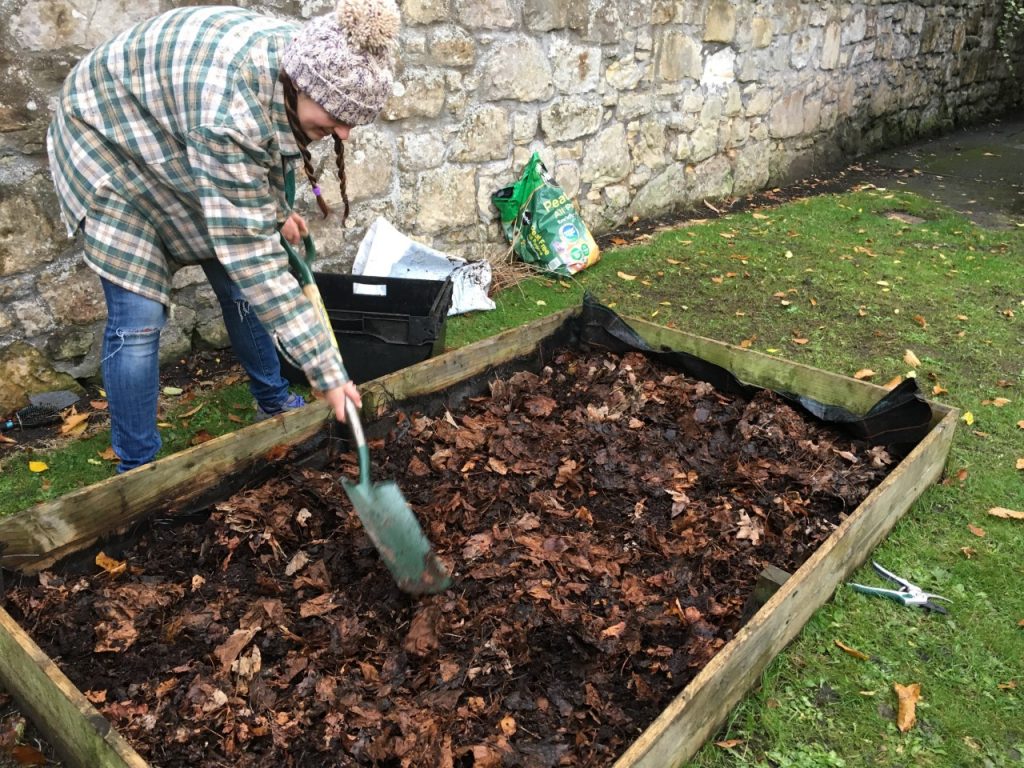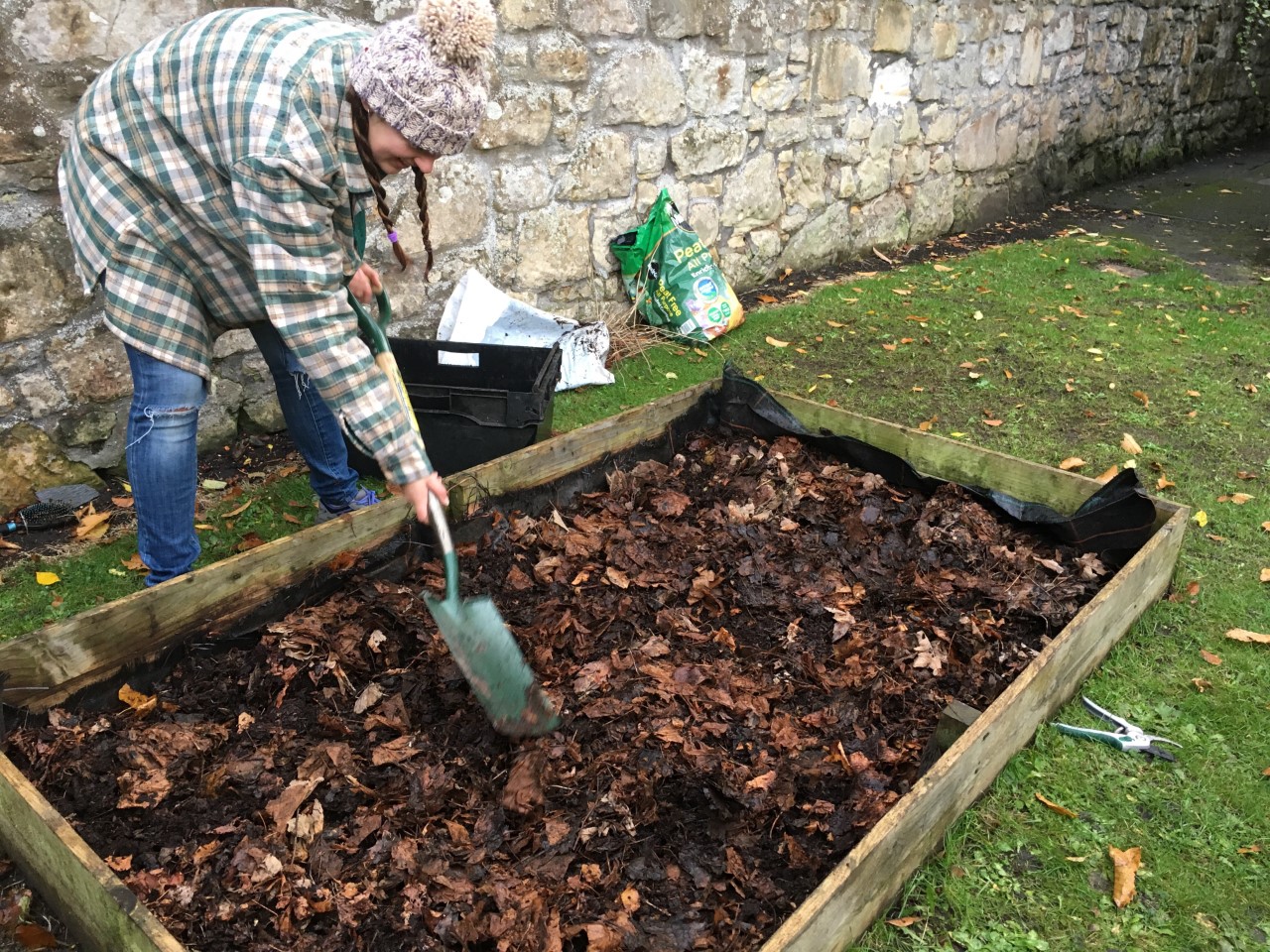This time every year we witness the leaves from the trees change colour and fall to the ground, their job of making energy for the trees to grow is over but their work does not end there. The leaves are full of nutrients and carbon which we are eager to put back into the soil.
The task of raking, collecting, leaf blowing, stock piling and shipping begins. For the gardeners and veg growers, we know this resource as ‘liquid gold’. For the regular household or institution, such as the University of St Andrews, this task is painstaking, repetitive and costly. We see tonnes of leaves collected every year and sent out of town in large containers on the back of big vehicles for a hefty fee. Only to pay more compost to be shipped in again in the spring.
Edible Campus is working to build leaf mulch bins at each garden for the University grounds team to off load their leaf piles; preventing it from being shipped away. We happily get to see the leaves decompose throughout the year in our gardens. Sometimes we give them water if they get too dry or turn it to add in some oxygen.
The most exciting part of this process is that by collecting huge piles of leaves we are also harvesting last years’ leaf fall full of nutrients and carbon. The piles have shrunken down to a tenth of its size, turned into the most beautiful colour of brown. And it is only complete with the tiny moving organisms that call it home. With great enthusiasm, we put this organic material back into the earth, laying it over the soil around the veg. The feeling is arguably more fulfilling than harvesting your first spring rhubarb and eating it warm with cold ice cream.

At St Regs (the annex), we are using last years’ leaf mulch and layering it much like a lasagne with grass clippings, compost and straw. This will sit over the winter and be ready for planting in the spring.

At Uni Hall we are putting together large leaf containers with chicken wire and wooden posts as it is a hotspot for leaf collection.


